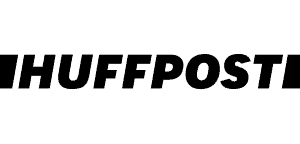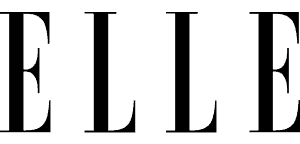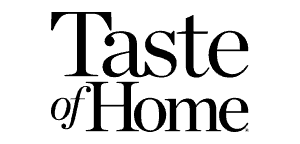Coconut Chutney (Nariyal Chutney)
on Jan 18, 2021, Updated Dec 11, 2023
Coconut Chutney (Thengai Chutney, Nariyal Chutney) is a classic South Indian condiment that is served with dosa, idli, vada, and also as a part of a meal. Made with fresh coconut, it is one of the most versatile chutneys that pairs well with any South Indian snack or breakfast.
Here are some more South Indian chutney recipes: Tomato Onion Chutney, Andhra Style Peanut Chutney, and Peanut Coriander Chutney.

My parents were doctors in UP government hospital. Most of the nurses working at the hospital were South Indians. They occasionally brought South Indian food for us; this white coconut chutney was always a part of whatever they brought.
The aunties would lovingly feed us their homecooked food and later share the recipes with my mom, who was always interested in learning to make the dishes her kids approved.
My mom perfect the recipe over the years to suit our taste buds.
About Coconut Chutney
Coconut Chutney (Nariyal Chutney, Thengai Chutney) is a popular South Indian condiment made using fresh coconut as its main ingredient. It tastes nutty, sweet, tangy, and mildly spicy.
It is traditionally served with Masala Dosa, Idli, Medu Vada, Paniyaram, Uttapam, etc.
This classic nariyal chutney recipe requires a few everyday ingredients, the most important being – fresh coconut.
Every South Indian home has its way of preparing it, and in this post, I am sharing the classic white coconut chutney recipe I learned from my mom.
You can also make it dry or flowy, depending on your preference.
Ingredients
All the ingredients to make this chutney are easily available at Indian grocery stores.
For The Chutney
Coconut – Fresh coconut is the star ingredient of this chutney. You can cut it into small pieces or grate it using a coconut or box grater.
To save time, use frozen coconut, which is already grated. You will find it in the freezer section of any Indian grocery store.
You can also use unsweetened desiccated coconut or coconut flakes to make nariyal chutney.
Roasted Bengal Gram (Bhuna Chana) – These differ from chana dal (Bengal gram lentils). They absorb the extra moisture, giving thengai chutney a nice body.
If you do not add the roasted gram, the water will separate from the nariyal chutney after some time, making it watery.
If roasted Bengal gram is unavailable, replace it with roasted peanuts or sesame seeds.
Yogurt (Dahi, Curd) – Yogurt adds a lovely tang to coconut chutney. To make a vegan chutney, skip adding it or replace it with a teaspoon of lime juice.
Green Chili and Ginger – Adjust the amount of these two according to your taste. You can use serrano peppers, Jalapeno peppers, or any other easily available chilies.
Tamarind Paste – It gives a nice tang to nariyal chutney apart from the yogurt. Do not miss it.
If you do not have tamarind paste, you can also soak a lime-sized ball of seedless tamarind in ½ cup of hot water for 10 minutes. Squeeze it, discard the pulp, and use the water while grinding the chutney.
For The Tempering
Tempering is optional, but it elevates the taste of this chutney to another level.
You will need cooking oil, brown mustard seeds, white urad dal (split and skinned black lentils), curry leaves, asafetida (hing), and dry red chilies.
Skip adding hing for a gluten-free chutney.
How To Make Coconut Chutney
Make The Chutney
Add the following ingredients to a blender, along with ½ cup water.
- 1 cup grated fresh coconut (packed)
- ¼ cup roasted Bengal gram
- 2 tablespoon plain yogurt
- 1 teaspoon chopped green chilies
- ½ inch piece of ginger (chopped)
- 2 teaspoon tamarind paste
- ½ teaspoon salt

Blend for 2-3 minutes or until smooth.
Scrape the sides of the blender a few times while blending.
Check for salt and add more if needed. If you like thinner chutney, you can also add more water.
Transfer the chutney to a small serving bowl.

Temper The Chutney
Heat 1 tablespoon oil in a small skillet (tadka pan) over medium-high heat.
Once the oil is hot, add ½ teaspoon brown mustard seeds and 1 teaspoon white urad dal (split and skinned black lentils).
Fry until the dal turns golden brown (40-60 seconds). Stir continuously while frying using a small spoon.

Add the following ingredients and fry for 2-3 seconds.
- 1-2 broken dry red chilies (remove the stalk)
- 10-12 curry leaves
- ¼ teaspoon asafetida

Pour the tempering over the thengai chutney and mix well.
Tip – You can save some tempering for the garnishing.
Serve the chutney at room temperature.

Pro Tips By Neha
Fresh coconut works best for making this chutney, but if it is not readily available, you can also use frozen coconut or desiccated coconut flakes.
If you use frozen coconut, let it come to room temperature before blending it. Blending the frozen coconut may cause the fats to separate from the pulp.
Frequently Asked Questions
You can store it for 3-4 days in an airtight container in the refrigerator. You can also freeze it for up to a month. Thaw and serve.
You Might Also Like
Global Breakfast
Ragi Idli

Coconut Chutney Recipe (Nariyal Chutney)
Ingredients
To Make The Chutney
- 1 cup grated fresh coconut (packed)
- ¼ cup roasted Bengal gram (bhuna chana) (or roasted peanuts)
- 2 tablespoons plain yogurt (dahi, curd)
- 1 teaspoon chopped green chilies (adjust according to your taste)
- ½ inch piece of ginger (chopped)
- 2 teaspoons tamarind paste
- ½ teaspoon salt (or to taste)
For Tempering
- 1 tablespoon oil
- ½ teaspoon brown mustard seeds
- 1 teaspoon split and husked black lentil (white urad dal)
- 1-2 whole dry red chilies (stalks removed and broken into 2-3 pieces)
- 10-12 curry leaves
- ¼ teaspoon asafetida (hing)
Instructions
Make The Chutney
- Add all the ingredients to make the chutney to a blender along with ½ cup of water.
- Blend for 2-3 minutes or until smooth.
- Scrape the sides of the blender a few times while blending.
- Add some more water if the chutney is too thick for your liking.
- Check for salt and add more if needed.
- Transfer the chutney to the serving bowl.
Temper The Chutney
- Heat oil in a small skillet over medium-high heat.
- Once the oil is hot, add mustard seeds and urad dal and fry until the dal turns brown (40-60 seconds). Stir continuously while frying.
- Add broken whole dry red chilies, curry leaves, and asafetida and fry for 2-3 seconds.
- Pour the tempering over the thengai chutney and mix well.
- Tip – You can save some tempering for the garnishing.
- Serve the chutney at room temperature.





















Nice recipe. Thanks
Thnx 🙂
Love this 🙂
i love coconut chutney……………..
perfect with dosa and idlis.